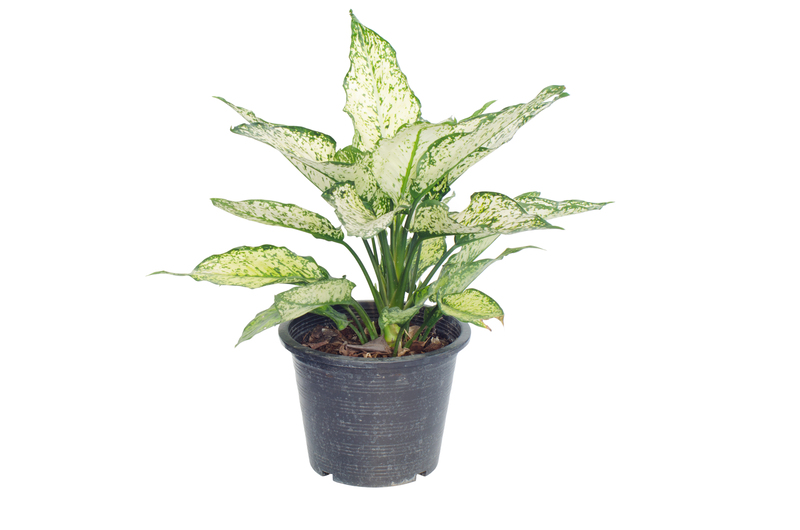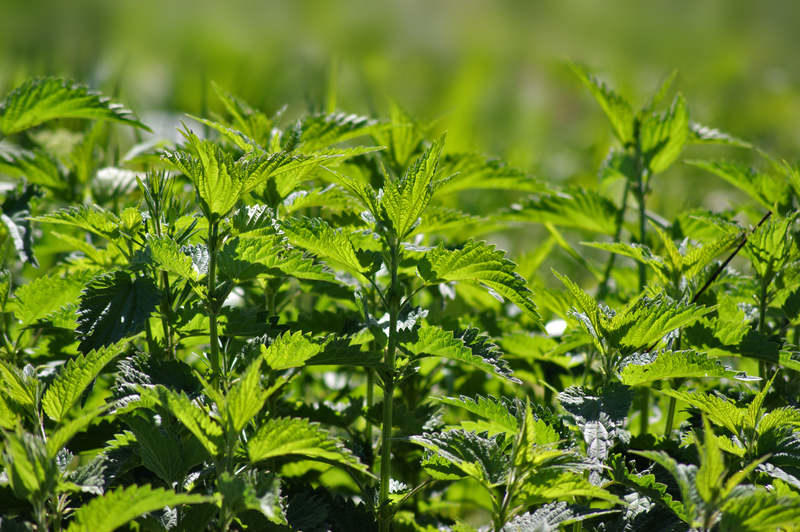Thrive Through the Heat: Practical Solutions for Summer Lawn Drought Stress
When the sweltering days of summer arrive, your vibrant green lawn often becomes the first casualty. Scarce rainfall, simmering heat, and relentless sun can quickly transform healthy turf into brown, brittle patches. If you're searching for the best ways to help your lawn survive drought stress in summer, you're not alone. Whether you're a homeowner passionate about curb appeal or simply want a comfortable oasis for your family, understanding practical solutions for lawn drought stress is essential.
In this comprehensive guide, learn how to thrive through the heat with effective strategies to combat summer lawn drought stress. Discover optimal watering techniques, lawn care practices, drought-resistant grass types, and modern solutions for a lush, resilient landscape--even under the most extreme conditions.
Recognizing the Signs of Summer Lawn Drought Stress
Before implementing solutions, it's important to identify drought stress in your grass early. Early detection allows you to take measures that can rejuvenate your yard before lasting damage occurs.
How Does a Drought-Stressed Lawn Look?
- Discoloration: Patches turn yellow, brown, or even grayish instead of vibrant green.
- Footprints Remain: Grass blades don't spring back after being stepped on.
- Wilted Blades: Lawn appears shriveled or curled, lacking turgidity.
- Slow Growth: Mowing frequency decreases significantly.
- Cracking Soil: Soil becomes hard, dry, and sometimes cracks due to severe moisture loss.
If you notice these symptoms, your lawn is likely experiencing summer drought stress and requires immediate attention.

Understanding the Impact of Heat and Drought on Lawns
High summer temperatures and limited precipitation combine to create a tough environment for any lawn. Most common turfgrasses--such as Kentucky bluegrass, perennial ryegrass, and fine fescue--prefer cool weather and adequate moisture, making them particularly vulnerable to heat waves and drought conditions.
- Transpiration Increase: Poor water retention as plants release more moisture through their leaves than roots can uptake.
- Photosynthesis Slowdown: Extreme heat inhibits photosynthetic activity, causing lawns to go dormant.
- Root System Stress: Shallow-rooted turf dries out rapidly, limiting the grass's access to deeper soil moisture.
By understanding these factors, you can select drought solutions that comprehensively protect your lawn from heat and dryness.
Smart Watering Techniques for Summer Lawn Survival
Efficient watering is your first defense against a dry, distressed lawn. Overwatering or poorly timed irrigation can do more harm than good, so follow these best practices:
Water Deeply, Not Frequently
- Apply 1-1.5 inches of water weekly, ideally in one or two sessions, to encourage deep root growth.
- Avoid shallow, daily watering which leads to weak, surface-level roots.
Irrigate Early in the Morning
- Watering between 4:00 AM and 9:00 AM reduces evaporation and wind loss, ensuring more water reaches the roots.
Monitor and Adjust
- Use rain gauges or moisture sensors to track how much water your lawn receives naturally versus what's needed to supplement.
- Be prepared to adjust irrigation based on weekly rainfall and evapotranspiration rates.
A deep-rooted, well-watered lawn is much more likely to thrive through heat and drought stress.
Sustainable Mowing Practices During Drought
During hot, dry spells, traditional mowing routines can intensify lawn damage. Adopting a few subtle changes can bolster your turf's drought defense.
- Mow Higher: Raise your mower blade to keep grass at least 3-4 inches tall. Taller grass shades the soil, retains moisture, and encourages deeper root systems.
- Sharpen Blades: Dull mower blades tear the grass rather than cut it, exposing more tissue to dehydration.
- Leave Clippings: Grass clippings provide a layer of organic mulch, helping the soil conserve moisture and return nutrients to the turf.
- Avoid Mowing When Stressed: If your lawn is actively wilting or brittle, postpone mowing until after a rainfall or irrigation.
These eco-friendly mowing strategies are easy to implement and can improve the resilience of grass against drought and heat.
Soil Health: The Foundation of Drought-Tolerant Lawns
Healthy soils are the unsung heroes in the fight against summer lawn drought stress. If your lawn continually struggles during heat waves, it may be time to enhance soil structure and fertility.
Tips for Improving Soil for Summer Lawn Success
- Core Aeration: Aerate your lawn at least once a year (preferably in spring or fall) to alleviate compaction and improve root penetration, allowing water, air, and nutrients to reach deeper into the soil.
- Topdress with Compost: Applying a thin layer of organic compost restores microbial activity and increases the soil's water-holding capacity.
- Maintain pH Balance: Test soil pH and add lime or sulfur as needed--optimal levels for lawn grasses range between 6.0 and 7.0.
- Mulch Flower Beds Adjacent to Turf: Mulched borders reduce competition for water and help stabilize soil moisture levels.
A robust, healthy soil base provides a reservoir of available moisture during drought, letting your yard withstand summer stress far more easily.
Choosing Drought-Tolerant Grass Species and Blends
If your lawn continually suffers despite your best efforts, you may need to upgrade your turf to more drought-resistant varieties. Some grasses are specifically bred to thrive with less water and higher heat.
Top Drought-Tolerant Lawn Grasses
- Bermudagrass (warm-season): Withstands intense heat, recovers quickly from drought, and thrives in full sun.
- Zoysiagrass (warm-season): Tolerates heat and dry conditions, forming a dense, soft turf.
- Tall Fescue (cool-season): Deep root system enables it to access water far below the surface.
- Buffalograss (warm-season): Exceptionally well adapted to hot, arid climates; requires minimal water after establishment.
- Fine Fescues (cool-season): Red fescue, chewings fescue, and hard fescue tolerate shade and low water conditions.
Consult with a local turf specialist or cooperative extension to discover the most suitable drought-tolerant blend for your region and specific microclimate.
Fertilization: Feeding for Drought Resilience
Feeding your lawn properly helps it recover from and resist the effects of heat and drought. However, timing and type of fertilizer matter.
- Avoid High-Nitrogen Fertilizers in Peak Heat: Nitrogen promotes rapid growth, which can deplete stored moisture and put additional stress on the grass.
- Opt For Slow-Release Formulas: Slow-release organic or synthetic fertilizers feed turf gradually, supporting root and stress response.
- Fertilize in Spring or Early Fall: These seasons encourage strong, deep root systems before the onset of summer drought.
- Incorporate Micro-nutrients: Adding essential minerals like potassium and iron improves stress tolerance and overall lawn health.
Properly nourished lawns have a better chance to bounce back from summer drought damage and stay greener even with limited irrigation.
Mulching and Groundcovers: Alternatives to Traditional Turf
If certain areas of your lawn are persistently challenged by summer heat and poor rainfall, mulching or using groundcovers may be effective and attractive alternatives.
Benefits of Mulching in Drought Conditions
- Reduces Water Loss: Organic mulches insulate the soil, reducing evaporation and keeping root zones cooler and moist longer.
- Suppresses Weeds: Limits competition for scarce resources by blocking sunlight to weed seeds.
- Adds Organic Material: As mulch breaks down, it improves soil structure and fertility.
Low-Water Groundcover Options
- Clover: White or microclover is drought-resistant, low-growing, and needs little mowing or fertilizer.
- Thyme: Creeping thyme forms a fragrant mat that withstands heavy sun and little water.
- Ajuga or Bugleweed: A dense, shade-tolerant groundcover thriving on reduced irrigation.
For sections of your yard where grass inevitably fails, these alternatives help you maintain a lovely landscape with far less water.
Smart Irrigation Solutions and Modern Technologies
Watering your lawn efficiently isn't just about hoses or sprinklers anymore. Innovative approaches can greatly increase the amount of water getting to the roots while reducing waste.
- Drip Irrigation: A targeted system that delivers water directly to the soil, minimizing evaporation and runoff.
- Soaker Hoses: Flexible hoses that gradually seep water along their length, keeping the soil uniformly moist.
- Smart Sprinkler Controllers: Automated systems that adjust watering schedules based on real-time weather, saving both water and money.
- Rain Barrels: Harvest runoff from roofs to water the lawn during dry spells--an eco-friendly and cost-saving tactic.
Consider investing in these modern irrigation technologies for more effective, stress-free summer watering.
Dealing with Summer Lawn Dormancy
Not all brown lawns are dead. Many grass species naturally go dormant, turning brown to conserve water and energy until favorable conditions return.
- Resist the Urge to Overwater: Resume normal watering when cooler, wetter weather returns, and your lawn will likely rebound.
- Avoid Excessive Foot Traffic: Dormant grass is brittle and more prone to breakage and compaction.
- Don't Fertilize During Dormancy: Wait until the turf greens up before applying nutrients, which could otherwise burn weakened roots.
Summer dormancy is a normal response, especially for cool-season lawns, and with proper care you can help your turf bounce back quickly after drought.
Proactive Prevention: Year-Round Strategies
The best way to address lawn drought stress and heat damage is to take steps throughout the year to strengthen your grass and soil.
Seasonal Lawn Care Checklist for Drought Defense
- Spring: Aerate, overseed with drought-tolerant varieties, and apply a balanced, slow-release fertilizer.
- Early Summer: Set mower to a higher cut, start deep watering routine, and monitor for pest or weed outbreaks.
- Mid-Late Summer: Reduce foot traffic, calibrate sprinklers, and monitor for signs of stress and dormancy.
- Fall: Fertilize and overseed to establish deep roots before winter; apply compost to improve soil.
By taking action in every season, you dramatically improve your lawn's odds of surviving--and even thriving through--summertime drought.

Frequently Asked Questions About Summer Lawn Drought Stress
1. How often should I water my lawn during a heatwave?
Aim for one to two deep watering sessions per week, supplying 1-1.5 inches of water in total. This encourages strong, deep roots rather than shallow, weak growth.
2. Can I revive a completely brown, drought-stressed lawn?
Many times, grass only appears dead but is actually dormant. Once temperatures cool and rainfall returns, most lawns will gradually recover. Proper care, patience, and possibly overseeding may be necessary.
3. Which lawn fertilizer is best for resisting drought?
Choose slow-release, balanced fertilizers with a higher potassium content for best results in drought stress resistance. Avoid fertilizing during the peak of summer heat or while the grass is dormant.
4. Should I mow the lawn when it's dry and brown?
Try to avoid mowing a drought-stressed or dormant lawn. Wait until the turf has recovered moisture and resumes growth to prevent further damage.
Conclusion: Enjoy a Resilient, Vibrant Lawn in Every Season
While summer lawn drought stress presents major challenges, homeowners can arm themselves with actionable, practical solutions to help their lawns not just survive, but thrive through the heat.
- Adopt smart watering and mowing habits.
- Focus on soil health and choose the right grass variety for your climate.
- Consider alternative groundcovers or mulching troubled areas.
- Leverage technology for efficient irrigation.
With foresight and dedication, you'll enjoy a lush, sustainable lawn--even on the hottest days. Don't let drought deter your dream of vibrant, green grass: put these practical solutions for drought-stressed lawns into practice and watch your yard flourish despite the summer heat!